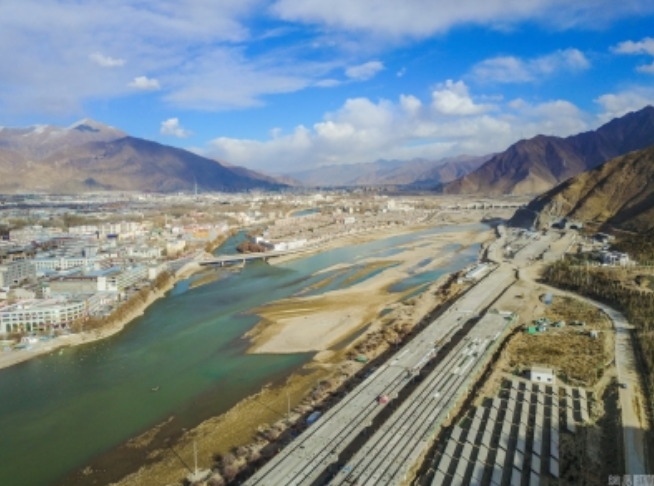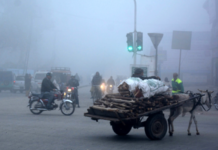New Delhi/Stockholm– A new report by the Stockholm Centre for South Asian and Indo-Pacific Affairs (SCSA-IPA) at the Institute for Security and Development Policy (ISDP) has warned that China’s aggressive infrastructure expansion, militarization, and resource extraction have pushed the Tibetan Plateau to a point of “extreme ecological stress.”
Released ahead of the UN Climate Change Conference (COP30) in Brazil this November, the report calls on governments, researchers, and civil society to place Tibet at the center of international climate policy, arguing that the crisis unfolding on the “Roof of the World” is already shaping the future of water, food, and energy security across the Indo-Pacific.
Titled “Wither Tibet in the Climate Crisis Agenda?”, the Stockholm Paper brings together more than 20 international experts to assess the environmental breakdown of the Tibetan Plateau and its far-reaching implications for Asia’s water systems, biodiversity, and climate stability. The study finds that the region, often called the “Third Pole,” is warming at more than twice the global average. Glaciers are retreating, permafrost is thawing, and grasslands are degrading, threatening water systems that sustain nearly two billion people across South and Southeast Asia.
Despite its global importance, Tibet remains largely absent from international climate negotiations, including the UN Framework Convention on Climate Change (UNFCCC) and successive COP meetings. The report directly links the ecological crisis to China’s governance model, stating that the country’s state-centric approach to infrastructure development and resource extraction has transformed one of the world’s most fragile environments into a zone of acute stress. Massive construction of highways, railways, airports, and hydropower dams—many of which serve dual civilian and military purposes—has disrupted permafrost layers, fragmented ecosystems, and displaced local communities.
The study accuses Beijing of masking these problems behind its “ecological civilization” narrative, noting that environmental degradation, opacity, and limited accountability define the situation on the ground. Military expansion and high-altitude exercises are intensifying pressure on unstable landscapes, while the lack of transparent environmental data prevents meaningful global assessment.
Among the report’s most urgent warnings is the construction of the proposed Medog mega-dam on the Yarlung Tsangpo (upper Brahmaputra River), a $160 billion project that could cause seismic disturbances, landslides, and irreversible damage to downstream ecosystems in India and Bangladesh. Experts fear that the absence of transparent impact assessments and data-sharing mechanisms could turn water into a geopolitical weapon.
The Stockholm Paper also highlights the exploitation of critical minerals such as lithium, copper, and rare earth elements, which are vital to the global green-energy transition. It says these materials are being extracted in Tibet with minimal environmental oversight, describing the process as “extractive colonialism” that externalizes the environmental costs of global sustainability onto one of the planet’s most vulnerable ecosystems.
The human cost is also immense. Since 2000, nearly one million Tibetans have been forcibly relocated under programs labeled as ecological protection or poverty alleviation. Many have been resettled multiple times without fair compensation or sustainable livelihoods, eroding cultural identity and the traditional stewardship that preserved the plateau’s delicate ecology for centuries.
The report stresses that Tibet’s degradation is not just a regional issue but a global one. The plateau’s stability is essential to Asia’s monsoon patterns, water flows, and carbon balance. The Stockholm Paper calls for Tibet to be treated as a frontline in the global climate emergency, urging transparent environmental monitoring, formal transboundary water-governance mechanisms such as a Brahmaputra Basin Commission, and stronger environmental safeguards tied to green finance and trade.
It concludes that protecting Tibet is not a political act but an ecological imperative. The continued degradation of the Tibetan Plateau, the authors warn, threatens Asia’s hydrological balance, undermines global carbon stability, and endangers the livelihoods of nearly one-third of humanity. (Source: IANS)













